Customize your browser automation Grid
With BrowserStack’s Automate TurboScale, you can customize the resources. timeouts or different parameters of a browser automation Grid as per your testing requirements.
Automate TurboScale allows you to run automated tests efficiently on a scalable Grid. You can customize your Grid settings to optimize your Grid configuration, ensuring efficient resource allocation and test execution to match your testing requirements. Here you will learn how to:
- Access Grid settings
- Configure your Grid parameters
Access Grid settings
Follow these steps to adjust various settings of your Grid to enhance performance and meet your testing needs.
- Log in to your Automate TurboScale account to access the Automation Console.
-
On the Automation Console, click the menu (three vertical dots) of the Grid you want to customize.
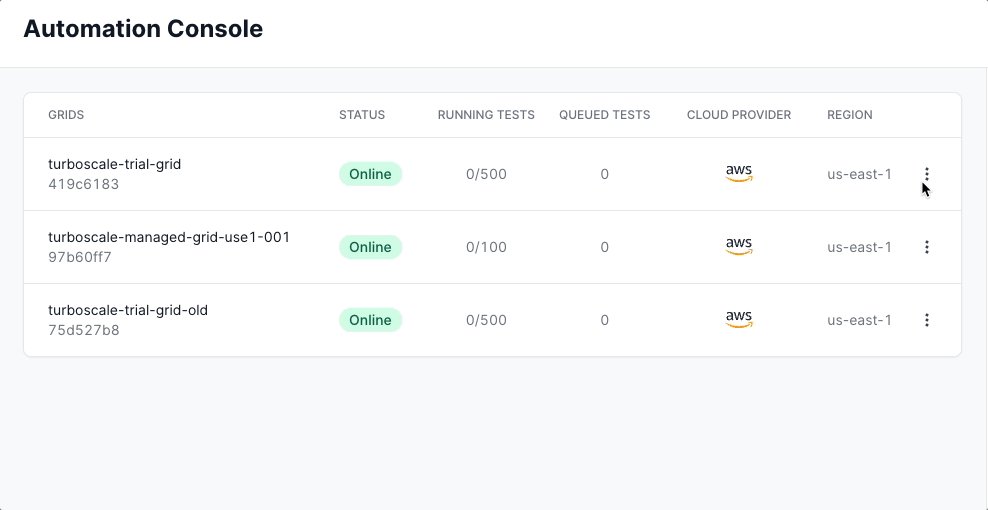
- Click Settings.
You are now in the settings dashboard of the Grid. Follow the below instrustions to configure the Grid parameters.
Configure Grid parameters
You can adjust the following parameters to optimize your Grid as needed:
- Grid concurrency limit
- Browser resources and configuration
- Timeout settings
- Test artifacts settings
Grid concurrency
With Grid concurrency, you can adjust the number of concurrent browser tests you can run. By default, new Grid support a concurrency of 50.
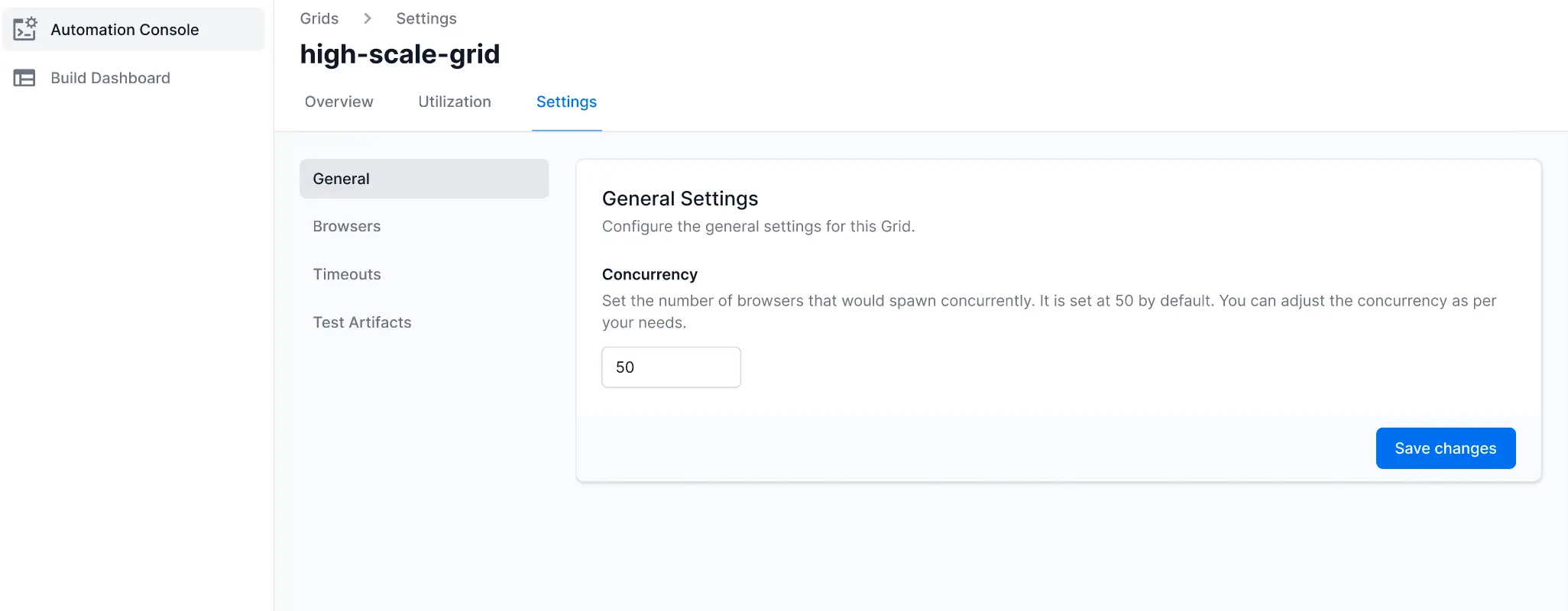
Browser resources and configuration
You can manage the CPU and memory resources allocated to browser instances during tests. Increase resources if your tests or websites require more processing power. Similarly, decrease resources for lighter tests to optimize Grid utilization.
By default, the Grid supports all browsers. Use the browser configuration options to restrict test sessions to specific browsers. This is useful when resource consumption varies between browsers and you need to control the resources utilized by the Grid.
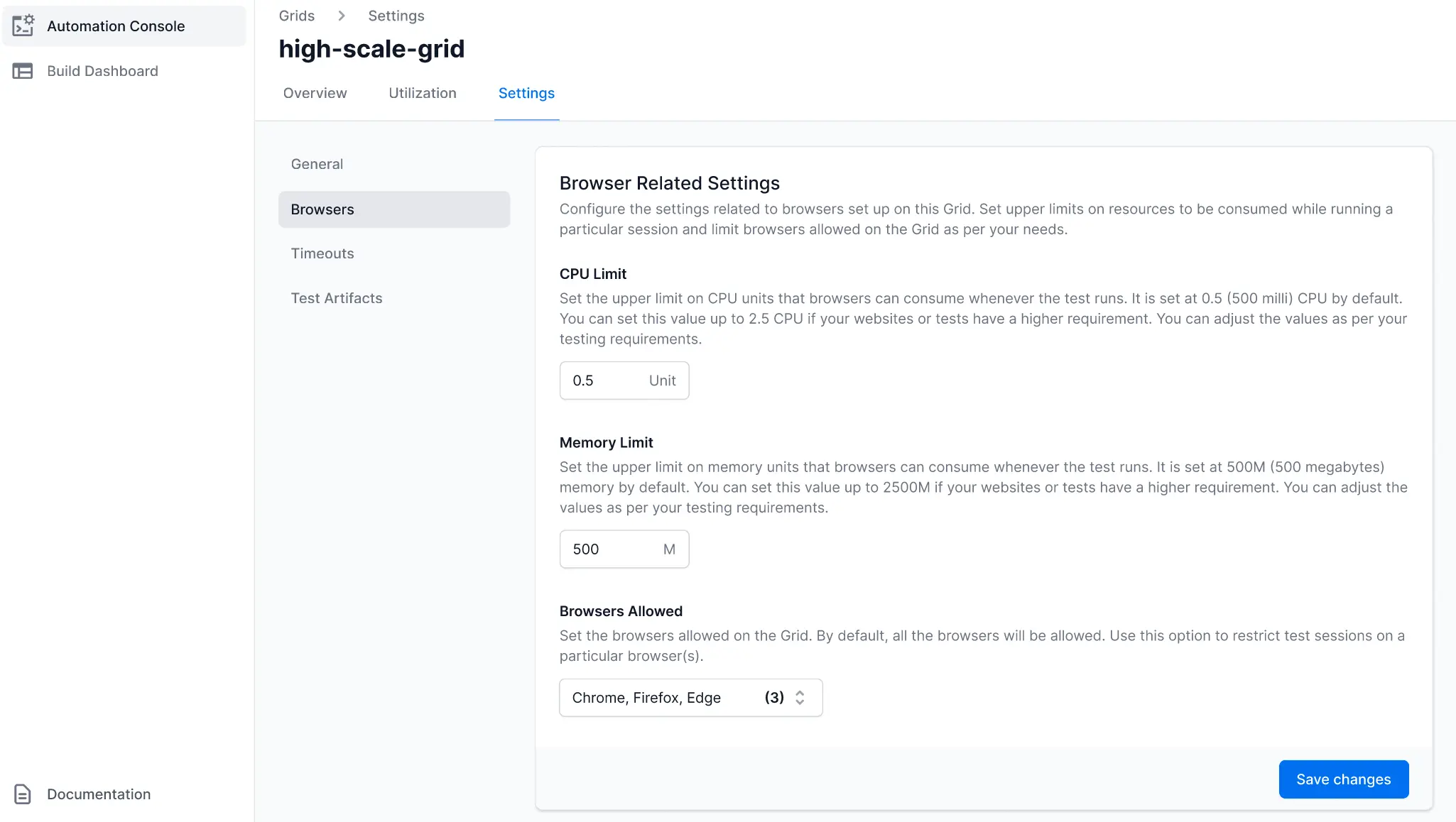
Configure different Timeouts
Set up different test-level timeouts as per your testing requirement.
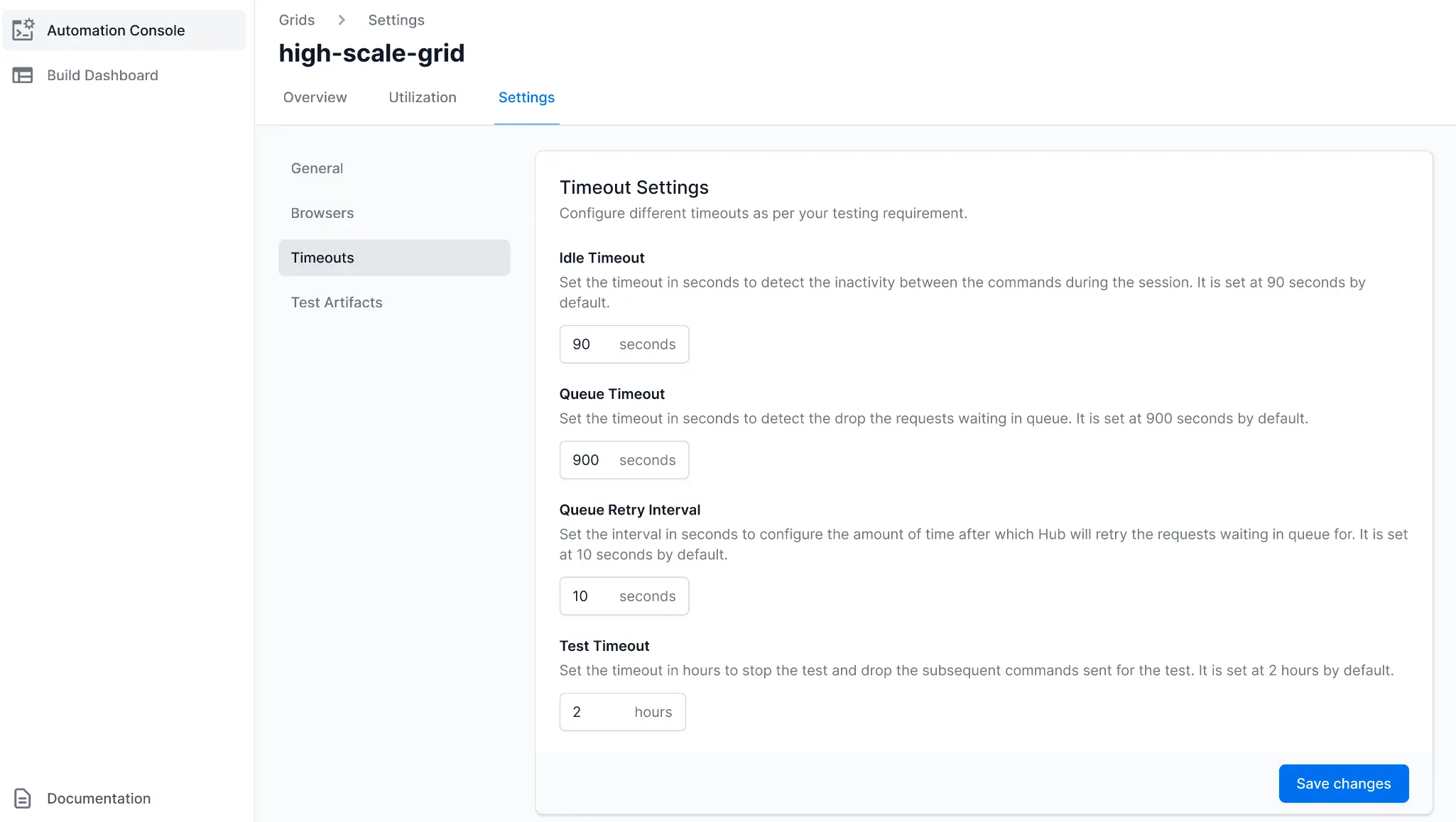
Idle Timeout
Whenever a test session is executed, Grid marks the test as inactive if there is inactivity between the commands and stops the session with the selenium server. This is required for Grid to ensure it handles the tests appropriately if there is a connectivity issue between the client and the Grid. Grid waits for a certain amount of time before timing out the test. This waiting period is called idle timeout. You can configure this idle timeout for a particular Grid.
Queue Timeout
Whenever a test session is queued due to insufficient resources or any internal reason, Grid retries the test request for a certain amount of duration before dropping the test and sending an error message to your test-suite client. This duration is called Queue Timeout. You can configure this queue timeout for a particular Grid.
Queue retry interval
Whenever a test session is queued due to insufficient resources or any internal reason, Grid retries the test request for a certain amount of duration before dropping the test. The Grid retries a test waiting in the queue after a certain time interval. You can configure this interval for a particular Grid.
Test Timeout
Whenever a test session is executed, Grid stops accepting the commands after a certain test duration. This is required for Grid to ensure the test isn’t running forever. You can configure this test timeout for a particular Grid.
Configure test artifacts
You can manage the logs and artifacts generated during tests to suit your specific testing and compliance requirements. By default, both video and framework logs are enabled, and logs are retained for seven days. However, you have the flexibility to customize these settings to optimize resource usage and focus on the most relevant data.
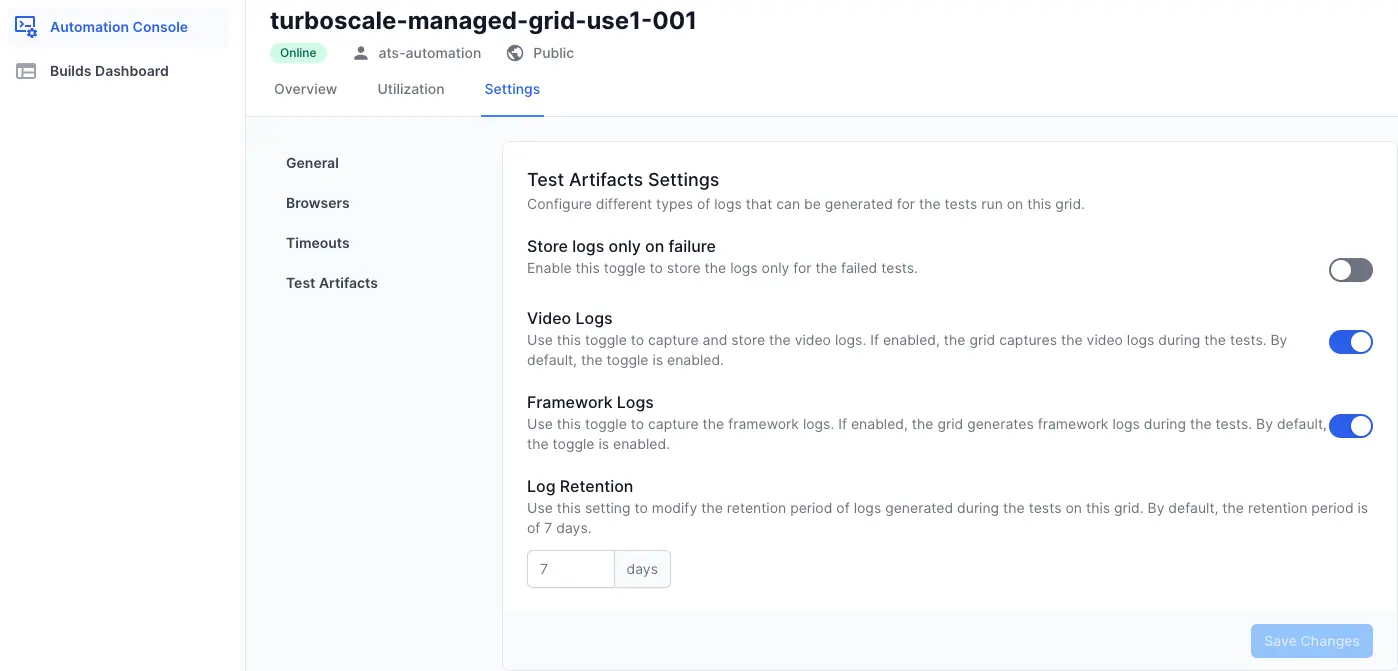
Store logs only on failure
Enable this option to store logs exclusively for tests that have failed. This saves storage space and helps you concentrate on debugging failed tests.
Video logs
Video logs record the entire screen activity during test execution. By default this is enabled. If video logs are not essential for your analysis, disabling them can save storage space and speed up your execution.
Framework logs
Framework logs capture detailed information from the testing framework, information about every framework command in your test script along with the browser preferences that you have configured. These logs provide insight into anything that might have led to your tests failing.
Log retention
With log retention setting allows you to adjust the number of days that logs are retained in the system. By default this is set to 7 days. You can modify the retention period to comply with your needs or organization’s data policies or specific compliance requirements.
Save changes
After configuring your Grid and test artifacts, do not forget to save your changes. This ensures that your Grid runs according to your custom setup during future test sessions.
By customizing these settings, you can optimize your browser automation Grid for performance, resource utilization, and compliance with your testing needs.
We're sorry to hear that. Please share your feedback so we can do better
Contact our Support team for immediate help while we work on improving our docs.
We're continuously improving our docs. We'd love to know what you liked
We're sorry to hear that. Please share your feedback so we can do better
Contact our Support team for immediate help while we work on improving our docs.
We're continuously improving our docs. We'd love to know what you liked
Thank you for your valuable feedback!